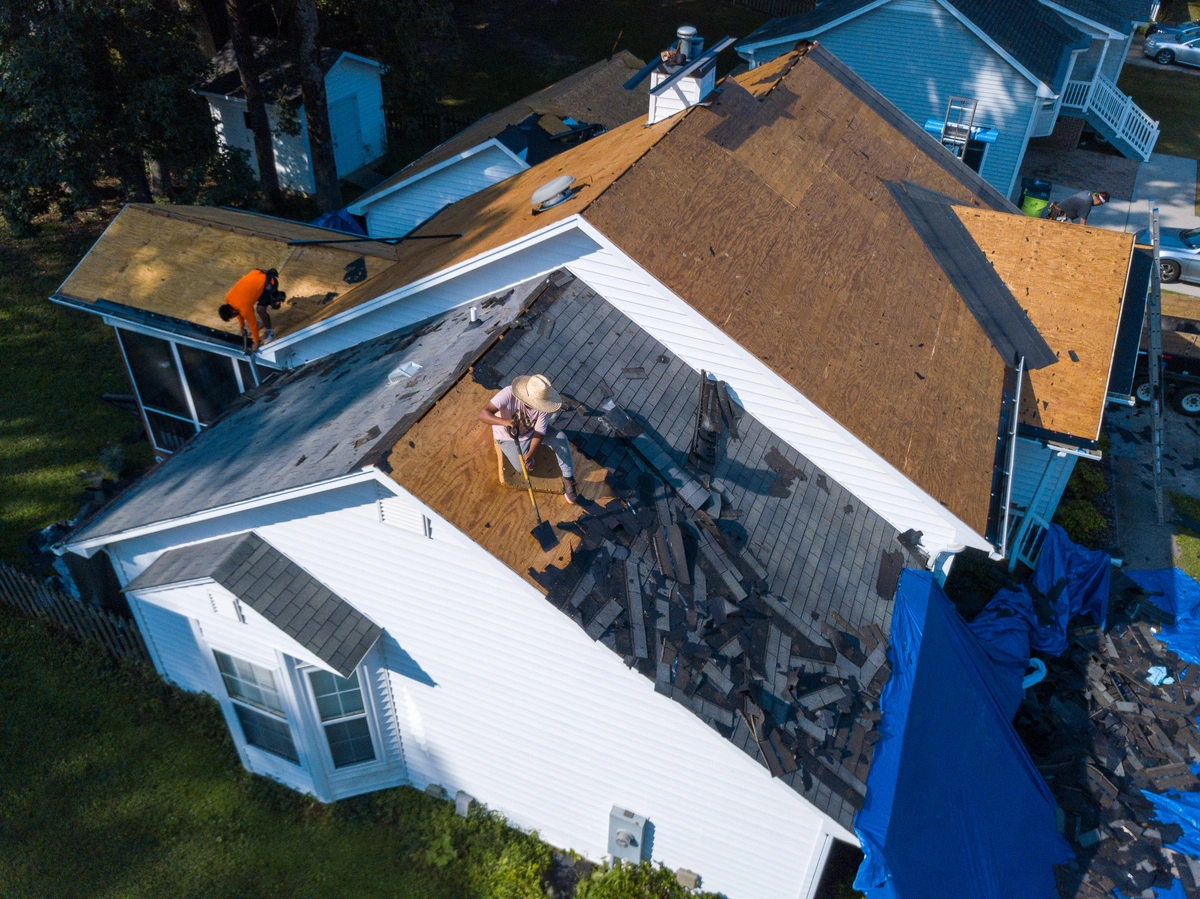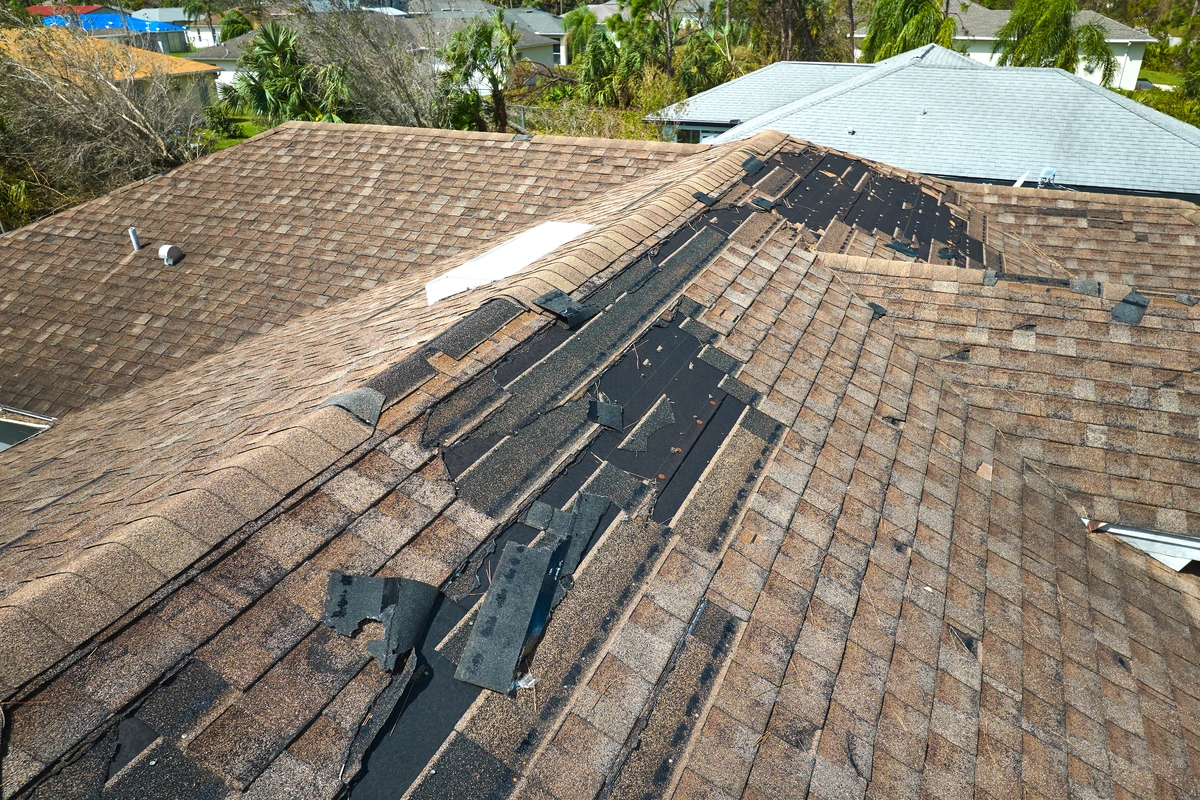Even the strongest roof is prone to damage from extreme weather conditions. However, the cost of a roof replacement can be substantial, leading many homeowners to turn to their insurance provider for coverage.
If you’ve been endlessly Googling “how to get insurance to pay for roof replacement,” your journey ends here! In this guide, we’ll walk you through:
- The steps to ensure that your insurance pays for a roof replacement
- Recognizing the signs that it’s time for a new roof
- Filing a successful insurance claim and understanding what your policy will cover
Signs That You Need a Roof Replacement
Before diving into the insurance aspect, it’s crucial to recognize the signs that indicate your roof needs replacement:
- Age: The age of your roof is a significant factor. Most asphalt shingle roofs last around 20-25 years, while other materials like metal or tile can last longer. If your roof is nearing or past its expected lifespan, it’s time to consider replacement.
- Visible Damage: Look for signs of wear and tear, such as cracked, curled, or missing shingles. Shingle granules in the gutters or on the ground indicate advanced wear.
- Leaks: Water stains on your ceiling or walls, as well as leaks during heavy rain, suggest that your roof’s integrity has been compromised.
- Sagging or Drooping: If your roof appears to be sagging or has areas that seem to dip, it could indicate structural damage and the need for immediate replacement.
- Moss or Algae Growth: While not necessarily a sign of imminent failure, excessive moss or algae growth can indicate moisture retention, which can lead to decay over time.
Understanding Insurance Coverage
Insurance coverage for roof replacement varies depending on your policy and the cause of the damage. Here’s what you need to know:
Covered Perils:
Most homeowners’ insurance policies cover roof damage caused by “acts of God” or sudden, unexpected events, such as storms, hail, wind, or fire. However, coverage may vary depending on your location and policy specifics.
Exclusions:
Insurance typically won’t cover damage resulting from neglect, normal wear and tear, or pre-existing conditions. Additionally, some policies may exclude coverage for certain types of roofs or materials.
Policy Limits and Deductibles:
Familiarize yourself with your policy’s coverage limits and deductibles. Your coverage may only pay up to a certain amount for roof replacement, and you’ll be responsible for any deductible.
Filing an Insurance Claim in 4 Steps
When it’s time to file a claim for roof replacement, follow these steps to increase your chances of success:
1) Document Damage:
Take photos and videos of the damage to your roof and any interior areas affected by leaks. This evidence will support your claim.
2) Review Your Policy:
Understand what your policy covers and any specific requirements for filing a claim.
3) Contact Your Insurance Company:
Notify your insurance provider as soon as possible after discovering the damage. They will guide you through the claims process and may send an adjuster to assess the damage.
4) Get Estimates:
Obtain estimates from reputable roofing contractors for the cost of replacement. Make sure the estimates include detailed information about materials and labor.
How Your Roofing Contractor Can Help
A knowledgeable roofing contractor can be an invaluable resource when navigating the insurance claims process. Here’s how they can assist you:
- Assessment and Documentation: A professional roofer can thoroughly inspect your roof, identify damage, and provide documentation to support your insurance claim.
- Negotiation: Roofing contractors experienced in insurance claims can negotiate with adjusters on your behalf to ensure that all necessary repairs are covered.
- Quality Workmanship: Choose a licensed and insured roofing contractor with a reputation for quality workmanship. Your insurance may require this, and it’s essential for ensuring the longevity of your new roof.
Cost to Replace a Roof Out of Pocket
The cost of replacing a roof can vary widely depending on factors such as the size of your home, the materials used, and the complexity of the job. On average, homeowners can expect to pay between $5,000 and $15,000 for a standard asphalt shingle roof replacement. However, this cost can increase significantly for larger homes or premium materials like metal or slate.
If you have to pay for a roof replacement out of pocket, consider the following:
- Budgeting: Start saving for a roof replacement as soon as possible to lessen the financial burden when the time comes.
- Financing Options: Explore financing options such as personal loans, home equity loans, or lines of credit to help cover the cost of a new roof.
- Energy Efficiency Upgrades: While replacing your roof, consider upgrading to more energy-efficient materials or adding insulation. While these upgrades may increase upfront costs, they can lead to long-term savings on energy bills.
Work With a Reputable Roofing Company
Replacing a roof is a significant investment, but with the right approach, you can navigate the process smoothly and potentially have your insurance cover the cost. By recognizing the signs that your roof needs replacement, understanding your insurance coverage, and enlisting the help of a reputable roofing contractor, you can protect your home and ensure a successful roof replacement project.
Do you want help understanding how to file a roof insurance claim? Trojan Roofing can help. Contact us today to learn how a roof insurance claim can save you money, while getting you the roof you deserve!



